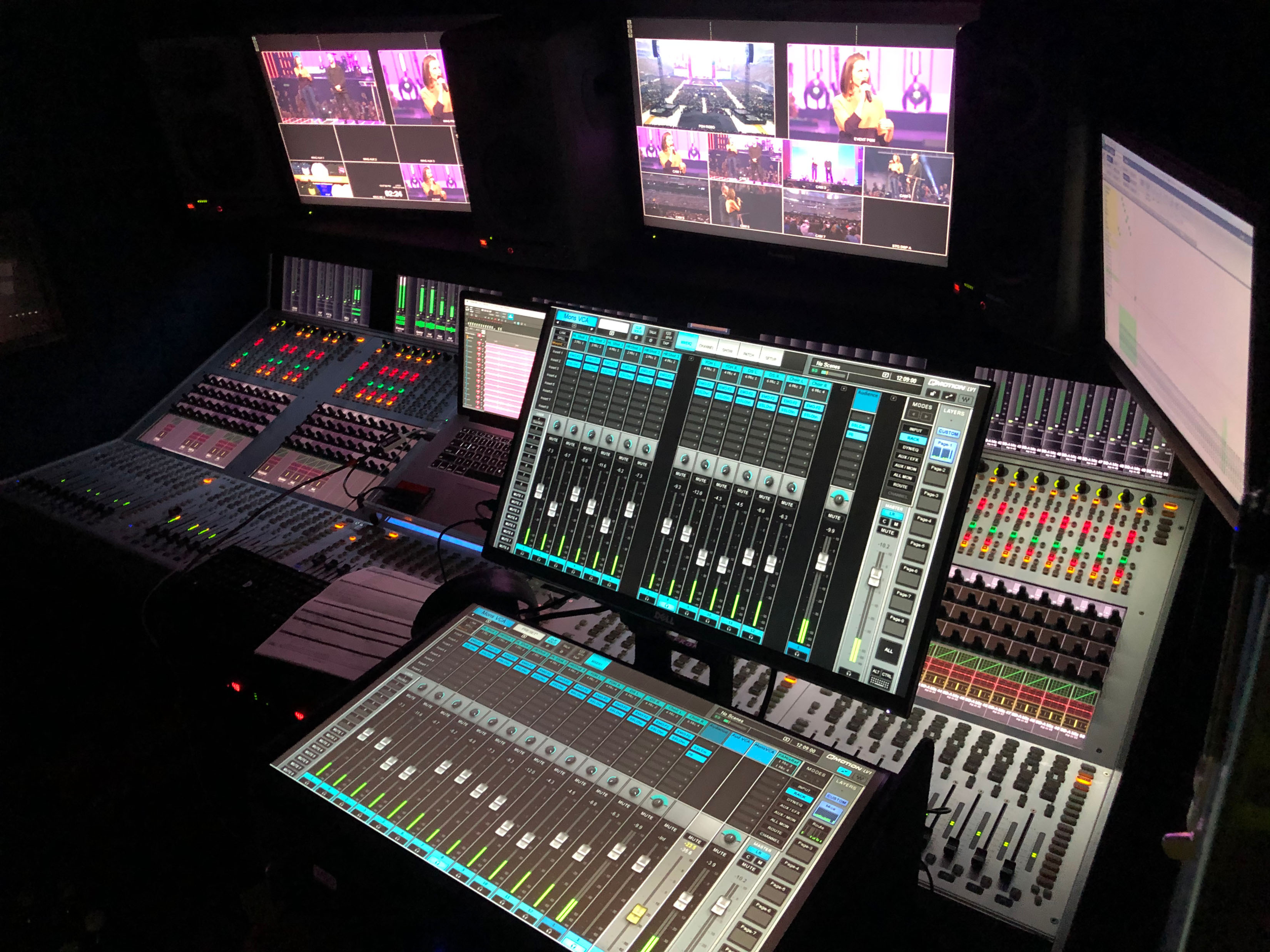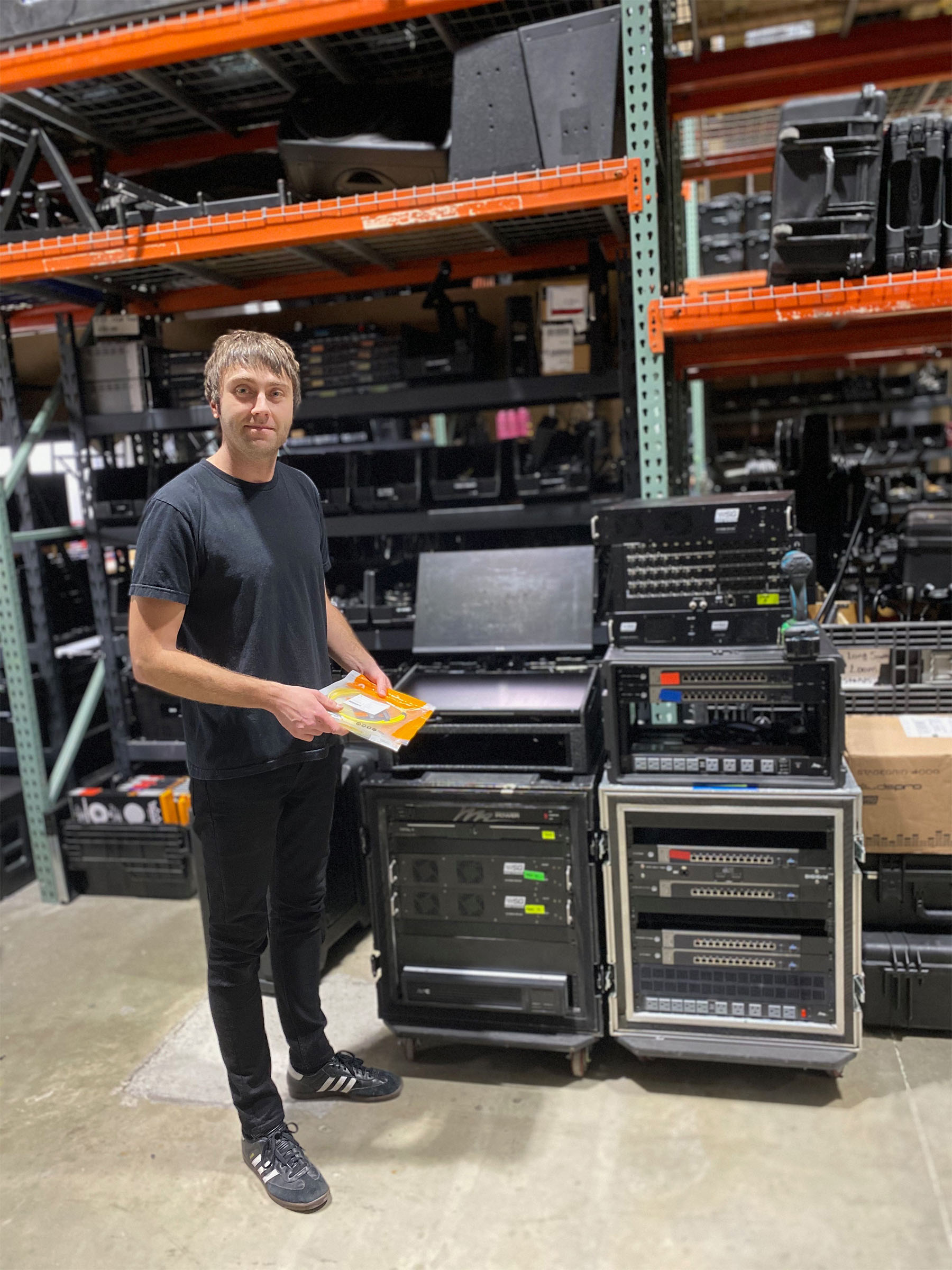FOH Engineer Stephen Bailey Chooses Waves eMotion LV1 and Waves SuperRack for the Passion 2020 Conference in Atlanta
 Passion’s lead audio engineer Stephen Bailey recently incorporated Waves eMotion LV1 Live Mixer and Waves SuperRack for the Passion 2020 Conference in Atlanta, an annual gathering of young adults between the ages of 18–25, which hosted over 65,000 attendees at the Mercedes Ben Stadium in Atlanta.
Passion’s lead audio engineer Stephen Bailey recently incorporated Waves eMotion LV1 Live Mixer and Waves SuperRack for the Passion 2020 Conference in Atlanta, an annual gathering of young adults between the ages of 18–25, which hosted over 65,000 attendees at the Mercedes Ben Stadium in Atlanta.
Bailey’s setup included a Waves eMotion LV1 Live Mixer, and a deployment of 10 Waves SoundGrid® recording systems for the three DiGiCo networks on site.
Bailey comments, “The DiGiCo systems were deployed in a festival configuration, with two artist loops and a production loop. Our primary recording system used a DiGiGrid MGR per each artist loop and a DiGiGrid MGB for the production loop, pulling audio and clock off the MADI Main outputs on each DiGiCo SD rack. Each DiGiGrid unit then hit its own NETGEAR ProSafe M4100-D12G 12-port Switch, which got the SoundGrid network onto single-mode fiber cable, and made its way about 100m outside, to one of the TV trucks where an engineer was managing our primary recording computers. The fiber routes were bookended by the same NETGEAR switches in the truck, where our engineer had three MacBook Pros running a Waves SuperRack SoundGrid host application to manage these networks. He had a DiGiGrid D on each network locally, to input monitor the audio from Waves’ Tracks Live DAW over headphones. We were also able to throw together rough mixes and output this from the DiGiGrid D to the truck speakers from Tracks Live, while recording in real time to make sure that what we were recording was clean, and also so the producers from the record label could determine if any changes from stage were needed. Our primary recording engineer was also archiving the recorded files and uploading them to Dropbox with a dedicated uplink computer, so after each session of the conference our film and other creative teams could immediately access and pull down audio to use for various exported content without having to ask our audio team.”
 Bailey adds, “Our secondary recording system was located under stage next to the DiGiCo SD racks. Nearly being a carbon copy of the primary recording system (minus the fiber run and extra switches), this system pulled audio off of the SD racks via the MADI Split Mains. With having SD12 consoles for Broadcast on each loop, each having two Waves DMI cards, we were able to send copy audio routes from the SD racks out of those, and straight into a MacBook Pro at each desk recording into Waves Tracks Live for a very simple, cost effective third redundancy.”
Bailey adds, “Our secondary recording system was located under stage next to the DiGiCo SD racks. Nearly being a carbon copy of the primary recording system (minus the fiber run and extra switches), this system pulled audio off of the SD racks via the MADI Split Mains. With having SD12 consoles for Broadcast on each loop, each having two Waves DMI cards, we were able to send copy audio routes from the SD racks out of those, and straight into a MacBook Pro at each desk recording into Waves Tracks Live for a very simple, cost effective third redundancy.”
He adds, “We also used a Waves eMotion LV1 Live Mixer to manage recording of audience mics around the stadium, via three DiGiGrid IOX units (placed house left, house right and at FOH). These units were connected to the truck on the same tac-fiber as the primary recording system, where the LV1 engineer managed, mixed and recorded these mics. ISOs of these audience mics were returned back into the DiGiCo SD racks via analog audio out of a pair of DSPRO StageGrid 4000 SoundGrid stageboxes for recording purposes, and a stereo mix of the audience mics was sent to the broadcast console on the production loop, where it was blended in with the broadcast program audio. What’s great about the eMotion LV1 Mixer are its small footprint, processing power and flexibility, and most significant, the ease of tying all these systems together. “
As far as must-have plugins in this production, Bailey comments, “The Waves F6 Floating-Band Dynamic EQ is a great-sounding EQ with powerful dynamic capabilities and a super useful RTA window; Waves’ Tune Real-Time is invaluable for vocals that live forever in a broadcast mix; the C6 Multiband Compressor is a mainstay for tidying up and smoothing out any unruly input, and the CLA MixHub has been bringing out guitars for me in big ways… its EQ section is amazingly musical and smooth. The Infected Mushroom Pusher is an odd one that I use quite a lot… the magic setting + stereo imaging is beautiful.”
Bailey remarks, on using SuperRack, “The workflow of SuperRack is highly appealing to broadcast mixing. The ability to have multiple plugin GUIs open simultaneously and recallable is great, especially for vocal chains and output processing. With SuperRack being based on SoundGrid, it opens the door to some really powerful workflows outside of the application itself, such as live drum sampling.”




